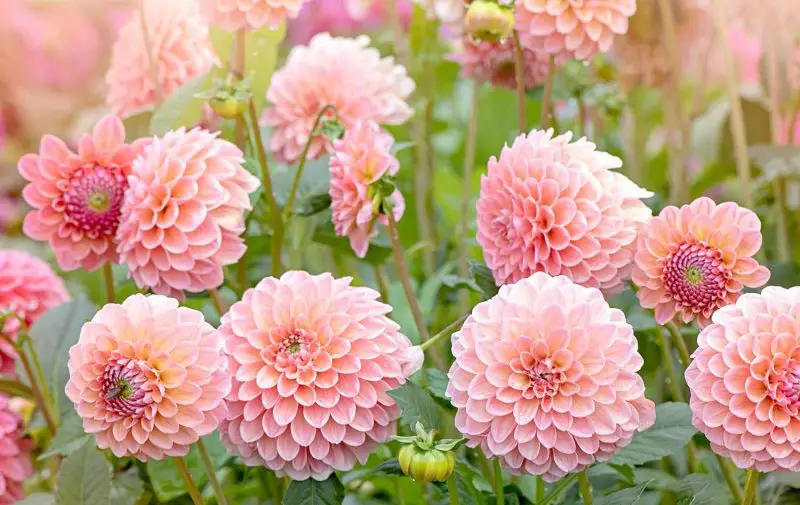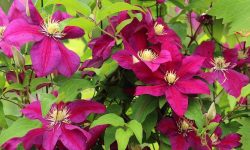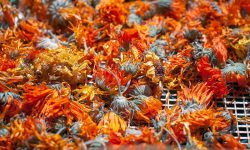Dahlias are among the most breathtaking flowers you can grow. Their endless variety of shapes, colors, and sizes makes every garden feel alive. From bold reds to delicate pastels, they fill the landscape with warmth and energy. But one question often troubles gardeners—how long do dahlias bloom? The answer depends on many factors, including weather, soil, and care. Dahlias reward patience and attention with a flowering season that can stretch from midsummer into the first frost. The secret lies in understanding their rhythm and helping them stay strong throughout the cycle.
This guide explores everything you need to know about dahlia blooming time. You’ll learn how long dahlias flower naturally, how to extend their season, and what care ensures constant color. We’ll also cover techniques for pruning, watering, and fertilizing that help flowers regenerate quickly. Whether you grow them in pots or garden beds, mastering their bloom cycle transforms your space into a canvas of color. With the right timing and care, dahlias don’t just bloom—they perform beautifully for months.
Understanding the Dahlia Bloom Cycle

The dahlia bloom cycle begins quietly underground, where tubers rest through winter until warmth returns. As spring soil warms, they awaken and begin producing roots and shoots. These first weeks are critical, as proper watering and sunlight help the plant gain strength. Roots grow deep to anchor the plant, while stems stretch upward in search of light. Within six to eight weeks, buds begin forming on healthy stems. Most dahlias begin flowering by midsummer, filling the garden with color and life. With consistent care, this blooming period can last several months, often well into fall.
Different varieties follow slightly different blooming rhythms. Smaller dahlias often flower earlier, while large dinner-plate varieties need more time to mature. In ideal conditions, dahlias bloom continuously for 90 to 120 days. Some may even flower longer if weather stays mild. Daylight, temperature, and nutrition all play major roles in maintaining bloom production. Deadheading, or removing faded flowers, encourages new buds to develop faster. When dahlias feel well-supported, they replace each bloom almost as soon as it fades.
Understanding this natural rhythm gives gardeners the power to extend beauty throughout the season. By matching care to each stage—growth, bud formation, and bloom—you guide the plant’s energy efficiently. Healthy roots and steady moisture maintain consistent color and strength. Dahlias reward attentiveness with a living performance of beauty that evolves week by week. When their cycle aligns with your care, the result is a garden that shines from summer’s first blush to autumn’s final glow.
How Long Do Dahlias Bloom Naturally?
Under normal growing conditions, dahlias bloom for a surprisingly long period. Most varieties begin producing flowers around midsummer, typically between late June and early July. Once blooming begins, they continue to produce new flowers consistently until the first hard frost. In many temperate regions, this gives a natural blooming window of about three to four months. When weather stays mild and care remains steady, dahlias can flower even longer. The length of their bloom period depends mainly on climate, daylight, and consistent maintenance.
Temperature plays a crucial role in bloom duration. Dahlias thrive in warm, moderate weather, ideally between 65°F and 80°F. Excessive heat above 90°F can slow flowering, while cooler nights stimulate bud formation. Shorter days and cooler nights in late autumn gradually reduce their blooming pace. In frost-free areas, dahlias may continue blooming for five or six months straight. However, in colder climates, their flowers stop almost immediately after frost touches the foliage. Understanding how temperature affects blooming helps gardeners protect plants and extend their life outdoors.
Soil quality and nutrition also determine how long dahlias sustain blooming. Plants grown in fertile, well-drained soil produce flowers more consistently. Regular deadheading keeps energy focused on new blooms rather than seed production. Watering deeply but not too often ensures strong root systems that can fuel long-lasting displays. With thoughtful care, dahlias naturally provide a colorful show from midsummer through the end of fall. Each variety has its rhythm, but all reward attention with vibrant, enduring beauty that lasts far beyond expectation.
Best Time of Year for Dahlias to Bloom
The best time of year for dahlias to bloom depends greatly on regional climate and planting schedules. In most temperate zones, dahlias begin flowering in midsummer and continue until the first frost. When tubers are planted after the last frost in late spring, blooms typically appear by mid to late July. With proper care, flowering continues for 90 to 120 days. In warmer coastal or tropical regions, dahlias may start earlier and bloom much longer, sometimes lasting until December. The key lies in soil warmth—dahlias need ground temperatures of at least 60°F to begin active growth.
Day length and sunlight also determine blooming time. Dahlias require full sun for six to eight hours daily to produce strong, colorful flowers. Long summer days encourage bud development, while shorter autumn days naturally slow the process. In regions with cloudy summers, gardeners can extend bloom time by choosing early-flowering varieties. Deadheading spent blooms also keeps the plant active longer, preventing dormancy from setting in too soon. Watering consistently and feeding every few weeks with low-nitrogen fertilizer supports strong, repeat blooms throughout the season.
For gardeners who want an extended bloom season, staggered planting works beautifully. Starting tubers indoors in pots six weeks before the final frost gives dahlias a head start. Transplanting them outdoors once the soil warms leads to early midsummer blooms. Meanwhile, planting another batch a few weeks later ensures color through late fall. This method guarantees a continuous wave of fresh flowers that lasts for months, creating a vibrant garden display from early summer until frost arrives.
Factors That Affect the Bloom Duration of Dahlias
Temperature and Climate
Temperature and climate strongly influence how long dahlias stay in bloom. These plants thrive in steady warmth, ideally between 65°F and 80°F. When conditions remain stable, buds continue forming week after week. However, prolonged heat above 90°F slows growth as dahlias conserve energy. Cooler nights around 55°F encourage new flower formation, keeping the bloom cycle active. Sudden changes in temperature can shock the plant, leading to fewer flowers and shorter blooming time. Maintaining consistency helps dahlias perform at their best.
In colder areas, blooming ends as soon as frost arrives. Even a light freeze damages petals, buds, and leaves. In mild or tropical regions, dahlias can continue flowering for months longer, sometimes well into winter. Gardeners can extend their bloom period by covering plants during cold nights or using mulch to keep soil warm. Container-grown dahlias can be moved indoors during unexpected cold spells. With steady temperatures and gentle protection, dahlias remain vibrant far beyond their usual growing window, rewarding consistent care with extended bursts of color.
Soil and Nutrition
Healthy soil is the foundation for long-lasting dahlia blooms. Rich, well-drained soil allows roots to breathe and absorb nutrients efficiently. When soil lacks structure or drains poorly, plants struggle to produce flowers. Mixing compost and organic matter keeps soil soft, airy, and fertile. Dahlias prefer slightly acidic to neutral soil, with a pH between 6.5 and 7.0. Proper texture and nutrition ensure roots stay active throughout the season. Balanced care below the surface always reflects in stronger, longer blooms above.
Fertilizing correctly sustains energy for continuous flowering. Use a fertilizer low in nitrogen but rich in phosphorus and potassium to encourage bud production. Feed every few weeks from midsummer through early fall. Deep watering after each feeding helps nutrients reach the root zone. Avoid overfeeding, as too much fertilizer burns roots and delays flowering. Regular soil checks ensure that nutrients remain balanced and moisture stays consistent. Healthy soil creates healthy plants, and nourished dahlias bloom proudly until the season’s very end.
Maintenance and Deadheading
Consistent maintenance plays a vital role in extending bloom time. Deadheading—the removal of faded flowers—signals dahlias to keep producing more. When spent blooms remain, the plant shifts energy toward seed formation instead of new buds. Removing old flowers regularly helps dahlias stay in a continuous blooming rhythm. It also improves airflow, reduces disease risk, and strengthens overall plant structure. Consistency and timing matter more than frequency; small, steady care keeps dahlias blooming for months.
Inspect your plants every few days during the flowering season. Use sharp, clean scissors to cut off fading flowers just above a leaf node. Remove weak stems and yellow leaves to promote stronger growth. After each pruning, water lightly and add compost to refresh nutrients. Deadheading also encourages new buds to open faster, creating a cycle of renewal that lasts deep into autumn. Regular, gentle maintenance transforms dahlias into tireless bloomers, providing waves of color and vitality until frost finally brings their rest.
How to Extend the Blooming Season of Dahlias
Extending the blooming season of dahlias depends on timing, consistency, and attentive care. The first step is maintaining steady moisture without overwatering. Dahlias love deep, even hydration, but soggy soil reduces oxygen and slows new bud formation. Water deeply two or three times weekly during warm months. Adding mulch helps retain moisture, regulate soil temperature, and prevent stress from heat or dryness. Consistent watering keeps the plant strong and ensures the blooms remain full and colorful. In dry or windy conditions, monitor soil moisture closely to prevent sudden wilting.
Pruning also plays a major role in extending bloom time. Regularly removing faded flowers encourages dahlias to produce more buds. When old blooms remain, the plant focuses on seed production instead of new growth. Pinching back weak stems early in the season promotes branching and creates a fuller shape. Feeding dahlias every few weeks with low-nitrogen fertilizer keeps the bloom cycle active. Balanced nutrients help maintain energy, allowing continuous flowering until temperatures begin to drop.
Protecting dahlias from sudden weather changes ensures the season lasts longer. As autumn approaches, cover plants during cold nights to prevent frost damage. Removing damaged leaves and adding extra mulch insulates the roots and keeps energy flowing. In mild climates, dahlias can bloom almost year-round with care. Gardeners who follow these techniques enjoy bright, abundant flowers long after most summer plants have faded. With consistency and observation, dahlias reward patience with color that endures beautifully through every season’s turn.
How Deadheading Extends Dahlia Flowering
Deadheading is one of the most effective techniques for keeping dahlias blooming all season long. By removing spent flowers, you prevent the plant from directing energy toward seed production. This redirection of energy encourages new buds to form continuously. Dahlias are naturally prolific bloomers, but without deadheading, their energy slows as the plant completes its reproductive cycle. Regular removal of old blooms resets this rhythm, pushing the plant to produce new blossoms repeatedly. Deadheading also keeps plants tidy, improves airflow, and reduces the risk of fungal growth around the flower base.
The best time to deadhead is when the flower petals start to fade or droop. Use sharp, clean scissors or pruning shears to cut below the flower head, just above a leaf node. This cut stimulates branching and triggers fresh bud development. Removing multiple faded blooms at once keeps the plant from becoming overloaded. Gardeners should inspect dahlias every few days during peak season, as blooms mature quickly under warm sunlight. When maintained consistently, this habit extends the blooming season by several weeks.
Deadheading also enhances bloom quality and color intensity. Each time you trim a wilted flower, nutrients are redirected to developing buds. Combined with proper feeding and watering, this routine ensures larger, longer-lasting flowers. Dahlias that are regularly deadheaded stay in a cycle of renewal, producing wave after wave of vibrant blooms. Even in late autumn, these plants can surprise you with fresh color when others fade. Consistent, gentle maintenance truly turns dahlias into stars that shine until the season’s final frost.
How Light Exposure Affects Bloom Longevity
Light is the driving force behind the entire blooming cycle of dahlias. These sun-loving plants depend on consistent, direct sunlight to maintain strong growth and vibrant flowers. Dahlias require at least six to eight hours of light each day to produce large, colorful blooms. Without enough sun, stems grow thin, buds remain small, and the bloom period shortens dramatically. In shaded gardens, the lack of light slows photosynthesis, reducing the plant’s ability to replace spent flowers. Full sunlight powers energy production, keeping the plant active and fueling repeated flowering throughout the growing season.
Morning sunlight is ideal because it provides gentle warmth and dries dew quickly, preventing fungal diseases. In very hot climates, afternoon shade protects petals from fading or scorching under intense light. Sunlight also affects petal color; sufficient exposure enhances pigment formation, making flowers appear brighter and more saturated. When plants receive consistent light, they form buds more frequently and recover faster between blooms. For gardeners growing dahlias in partially shaded spaces, repositioning pots every few days ensures all sides of the plant get equal exposure.
Artificial lighting can also help extend bloom duration in shorter-day climates. Using reflective surfaces like white fences or garden mirrors increases light intensity without overheating the plants. For indoor or greenhouse dahlias, LED grow lights can mimic sunlight for 10–12 hours daily. Balanced light exposure supports strong stems, healthy leaves, and continuous flower development. Managing light correctly turns ordinary dahlias into season-long performers that retain color, shape, and vitality far longer than those grown in uneven or limited sunlight.
Common Problems That Shorten Dahlia Bloom Time
Overfertilization and Excess Nitrogen
Too much fertilizer, especially nitrogen-rich types, often reduces dahlia flowering. When nitrogen dominates the soil, the plant focuses on leaf and stem growth instead of producing buds. The result is tall, lush foliage with few or no blooms. Dahlias need balance—phosphorus and potassium encourage flowering while nitrogen supports leaf structure. Excess nitrogen also increases susceptibility to pests and disease. Understanding fertilizer composition prevents this issue and keeps your plants healthy.
To correct overfertilization, stop feeding temporarily and flush the soil with deep watering. Allow the excess nutrients to wash away before resuming a balanced fertilizer program. Choose one labeled with low nitrogen, such as 5-10-10 or 10-20-20. Feed only every three to four weeks during the blooming period. Adding compost helps restore natural soil balance. Consistent monitoring keeps growth steady and flowering strong. Moderation always produces the best results, and proper feeding ensures dahlias deliver the color and abundance they’re known for.
Inconsistent Watering and Root Stress
Uneven watering patterns shorten bloom duration quickly. Dahlias thrive with deep, regular hydration, but alternating between dry and soaked soil shocks the roots. This stress stops bud formation and leads to small, short-lived flowers. Inconsistent watering also increases the risk of rot or cracking in the stems. Roots must stay moist enough to draw nutrients without drowning. Finding this balance ensures continuous, vibrant blooms throughout the growing season.
To maintain stability, water deeply twice weekly in warm weather, adjusting for rainfall. Always check moisture levels by feeling the soil two inches below the surface. It should feel slightly cool, not dry or sticky. Mulching helps regulate soil temperature and reduces evaporation. Avoid shallow, frequent watering because it keeps roots near the surface. Deep watering promotes stronger, deeper root systems that support steady blooming. Consistent care creates resilient plants that flower beautifully until frost. Regularity, not excess, keeps dahlias healthy and colorful longer.
Pest Damage and Disease
Pests and diseases are major reasons dahlias stop blooming early. Aphids, thrips, and spider mites suck nutrients from leaves and buds, weakening the plant. Fungal infections like powdery mildew or botrytis thrive in damp, shaded areas, blocking the plant’s ability to produce new flowers. When leaves lose strength, energy cannot reach the buds, and flowering slows. Early detection is essential to prevent these problems from spreading.
Inspect plants regularly, especially beneath leaves and near buds. Remove infested parts and discard them away from healthy plants. Use neem oil or insecticidal soap for mild infestations. Improve air circulation by pruning dense areas and spacing plants properly. Avoid overhead watering to reduce moisture on leaves. Strong soil health and proper fertilization naturally strengthen dahlias against disease. A clean, well-ventilated growing space ensures lasting color and resilience. Healthy plants resist damage better and continue producing bright, full blooms late into the season.
Tips to Keep Dahlias Blooming Longer
Keeping dahlias in bloom longer requires balance, timing, and consistency. The most effective habit is to deadhead spent flowers regularly. Removing faded blooms encourages the plant to send energy into new buds rather than seeds. Check your plants every few days and trim old flowers cleanly above a leaf node. This process refreshes the plant’s cycle and stimulates continuous flowering. Combine this with proper watering—deep and steady rather than frequent and shallow. Moist, well-drained soil keeps roots active and supports longer-lasting blooms.
Light also plays an important role in sustaining blooms. Dahlias need at least six hours of direct sunlight daily. Insufficient light makes stems weak and buds small. If growing in partial shade, move potted dahlias to brighter spots when possible. In hot climates, morning sun is ideal since afternoon heat can dry the soil too fast. Feeding dahlias every three to four weeks using a balanced, low-nitrogen fertilizer maintains strong root and bud development. Healthy feeding patterns help the plant recover quickly between blooms and extend the flowering period naturally.
Finally, protect dahlias from weather extremes and stress. Use mulch to moderate soil temperature and prevent dehydration. During heatwaves, water early morning or late afternoon to avoid evaporation. When cold nights arrive, cover plants with light fabric to guard against frost. Keep pests under control and avoid overfeeding late in the season. By combining careful maintenance with stable growing conditions, you ensure dahlias stay in bloom longer, displaying radiant color and strength well into autumn’s cool air.
Preparing Dahlias for Continuous Bloom Next Season
Preparing dahlias for next season begins as the current blooms start to fade. Toward the end of fall, reduce watering gradually so the plant can store energy within its tubers. Allowing the foliage to yellow naturally helps nutrients return to the roots. Once the first frost blackens the leaves, it’s time to cut the stems back to about six inches. This process signals dormancy and strengthens the tubers for next year’s growth. Healthy tubers carry stored carbohydrates that fuel strong shoots and early blooming once the soil warms again.
After cutting back, gently lift the tubers from the soil using a garden fork. Handle them carefully to avoid bruising. Shake off loose dirt but leave some soil around the roots to prevent drying out too quickly. Let the tubers cure for three to five days in a cool, ventilated space. Once dry, remove any rotted or damaged sections. Store the tubers in peat moss, vermiculite, or sawdust in a frost-free location. Proper storage maintains hydration and prevents rot during winter dormancy. Labeling varieties ensures easy replanting next spring.
In early spring, inspect the stored tubers carefully before replanting. Divide large clusters into smaller pieces, ensuring each has at least one visible eye. This step rejuvenates growth and increases flower production. Replant after the last frost in nutrient-rich soil mixed with compost. Add mulch to retain moisture and protect young shoots from temperature swings. Tubers prepared with care bloom earlier, stronger, and longer, rewarding gardeners with a stunning display year after year.
How to Encourage Repeat Blooming in Dahlias
Dahlias can reward attentive gardeners with multiple waves of blooms throughout the growing season. To encourage repeat flowering, the key is to maintain a rhythm of pruning, feeding, and watering that supports regeneration. After the first blooms fade, cut the stems back just above a set of leaves or side buds. This cut stimulates branching and redirects energy from spent flowers to new bud formation. Within two to three weeks, new shoots appear, ready to open again. Continuous deadheading keeps this process active, preventing energy loss to seed formation. Dahlias that receive regular trimming rarely stop blooming until frost arrives.
Nutrition plays a crucial role in sustaining repeat cycles. Fertilize dahlias every three to four weeks with a low-nitrogen, high-phosphorus formula to boost root and bud growth. Phosphorus promotes stronger blooms, while potassium improves color and durability. Always water deeply after feeding to help nutrients reach the lower root zone. Shallow watering limits energy flow and slows the bloom cycle. Consistent moisture combined with balanced feeding gives the plant strength to recover quickly between flushes. Gardeners who maintain this pattern see dahlias rebloom several times in one growing season.
Environmental management also affects repeat blooming. Adequate sunlight and good air circulation help dahlias regenerate efficiently. Removing weak stems allows better airflow and directs nutrients to stronger growth points. During midseason, apply a thin layer of compost to refresh soil nutrients. If frost approaches early, cover plants overnight to extend their bloom life. Through steady care and rhythm, dahlias can produce a breathtaking succession of flowers from midsummer until the final chill of autumn.
FAQs About Dahlia Blooming
How long do dahlias usually bloom each year?
Dahlias typically bloom for about three to four months, starting in midsummer and lasting until the first frost. In mild climates, they can bloom for up to six months. Consistent watering, sunlight, and regular deadheading help extend this period, keeping flowers vibrant until late autumn.
Do dahlias bloom more than once in a season?
Yes, dahlias can bloom several times if cared for properly. Regular deadheading and light pruning stimulate continuous flowering. After each wave of blooms, the plant rests briefly before producing new buds. Balanced fertilizing and deep watering support this ongoing cycle throughout the growing season.
Why do my dahlias stop blooming early?
Early bloom failure often results from overfertilization, heat stress, or inconsistent watering. Too much nitrogen encourages leafy growth but delays flowering. High temperatures can also cause buds to drop. Maintain steady moisture, provide partial shade during extreme heat, and use low-nitrogen fertilizer for longer-lasting blooms.
How can I make my dahlias bloom faster?
To encourage faster blooming, start tubers indoors six weeks before the last frost. Provide strong sunlight and consistent moisture during early growth. Once transplanted outdoors, fertilize regularly and pinch back early stems. These steps produce bushier plants that flower earlier and continue blooming longer.
Do potted dahlias bloom as long as garden dahlias?
Yes, potted dahlias can bloom just as long when cared for properly. They dry out faster than those in the ground, so frequent watering is necessary. Place pots in full sunlight, feed regularly, and remove faded flowers. With attention, potted dahlias deliver color all season long.
Conclusion
Dahlias bring endless joy to every garden with their bold colors and graceful blooms. Understanding their growth rhythm helps you nurture longer, stronger flowering. With proper watering, feeding, and sunlight, dahlias reward your care with continuous beauty from summer to frost. Simple habits—like deadheading and balanced fertilizing—make all the difference. Each petal reflects attention and patience. When dahlias bloom for months on end, your garden transforms into a living celebration of color and life. Every season offers another chance to grow, admire, and fall in love again.






